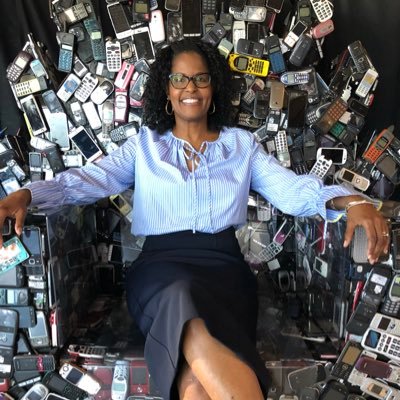At the dawn of a new decade, many leading organizations are looking to make their workplaces more diverse and inclusive. The year 2020 could mark a tipping point for women in STEM. In this article I explore the STEM gender gap, and how organizations like Girls in Tech aim to level the playing field.
Gender inequality in STEM
While the “Time’s Up” and “Me Too” movements are striving for 50/50 gender equality, focusing particularly on the entertainment industry, the reality is that the tech sector has far to go before getting anywhere near this number.
Nevertheless, progress is happening. Many nonprofits and industry organizations have been established with the sole aim of bridging the gender gap in STEM. After all, gender inclusivity is not only good for women and society, it is also good for business. A generation ago, one might be hard-pressed to find a major corporation with executive staff dedicated to diversity and inclusion—but today, some 47% of companies on the S&P 500 Index have a chief diversity officer or the equivalent. The existence of this position does not necessarily mean that these companies’ workforces are actually diverse, but it is clearly an encouraging sign.

For example, Lesley Slaton Brown has worked with HP as their Chief Diversity Officer for more than a decade. In that time, she has helped establish HP’s reputation as one of the most inclusive and diverse organization’s in the tech sector today. As reported in Forbes, the company’s board of directors is 45% women and 27% underrepresented minorities. Moreover, its executive leadership team is 33% underrepresented minorities, and 26% are women. Women also make up 37% of its overall workforce. These numbers are still shy of a true 50/50 gender split, but they are hopeful for a tech company.
Increasing diversity and inclusivity has had a tangible impact on profit margins. A recent study by BCG looked at 1,700 organizations in eight different countries, varying in size and industry. Their findings revealed that increasing diversity within management teams increases innovation, which in turn improves financial performance. The study revealed that increasing diversity has a direct impact on a company’s bottom line. In fact, BCG’s report revealed that companies with diverse leadership teams generate up to 19% higher revenue, likely due to increased innovation. Diversity and inclusion are integral parts of any successful, profitable business.
Equality by the numbers
The US has rapidly transformed to an information-based economy. According to the Pew Research Center, employment in STEM-driven fields has increased exponentially, with STEM employment growing 79% since 1990, equating to up to 17.3 million jobs. Jobs in computing have increased by a massive 338% in that timeframe.
Pew found that women make up the majority of healthcare practitioners and technicians, but are underrepresented in computer jobs and engineering, among other growing STEM fields. In fact, the share of women in computer occupations (such as computer scientists, systems analysts, and software developers) has actually fallen 7 percentage points since 1990.
Moreover, gains in women’s representation throughout the STEM industries have largely been driven by women holding advanced degrees. Women are still underrepresented even among this population, however. Perhaps most concerning is the fact that even women who majored in engineering in college are less likely than their male counterparts to be working in an engineering position.
Girls in Tech
Girls in Tech is one example of an organization working to close the gender gap in STEM. This global nonprofit seeks to empower women with a passion for technology, offering everything from hackathons, to coding camps, to startup competitions, for women of all ages and professional backgrounds.

Girls in Tech also supports women currently working in tech, providing them with the connections and opportunities they need to succeed. Founded in 2007 in San Francisco, Girls in Tech is a global community comprising more than 62,000 members across 33 different countries. There are 47 separate chapters, each offering a variety of programming events geared toward each local community’s needs. The organization also promotes learning through programming workshops, catering to both novices and advanced professionals.
Girls in Tech’s founder, Adriana Gascoigne, was once the lone women executive at a Silicon Valley startup. The harassment and discrimination she experienced inspired her to set up an organization to empower women in male-dominated industries. She started championing women’s causes and working to help young women entrepreneurs, and Girls in Tech was a natural progression of her commitments.
Girls in Tech’s AMPLIFY program
AMPLIFY is a startup competition that helps talented young women establish tech ventures that will make a real difference in the world.
This year, just 2.8% of all US venture capital dollars went to startups founded by all-female teams. This total sounds small—and it is—but it actually represents an increase from last year’s percentage of 2.2%. When one includes all-female and mixed-gender founding teams, the percentage increases to 11.5%. In other words, all-male teams are claiming the lion’s share of venture capital funding in the US.
AMPLIFY was established to help female founders and increase the number of female-fronted startups receiving VC dollars. Now in its seventh year, AMPLIFY invites early-stage startups with at least one woman founder to compete for seed funding. Judges include successful entrepreneurs, tech industry veterans, and investors.
Though women have made impressive advances in the workforce over the course of the 20th century, there still remains a significant equality gap in many industries, particularly STEM. Organizations like Girls in Tech and many others are striving for greater balance in these sectors and inspiring young women to pursue STEM careers.
